Every interface [is a /needs] Maze
Every interface [is a /needs] Maze
Every interface [is a /needs] Maze
Navigating the product-led growth strategies that powered Maze to a customer base of 40,000+ brands
Navigating the product-led growth strategies that powered Maze to a customer base of 40,000+ brands
Navigating the product-led growth strategies that powered Maze to a customer base of 40,000+ brands



“Build it and they will come”
The proud epitaphs on the tombstone of a vast graveyard of failed startups who prioritized building a solution over testing the depth of a problem. A startup’s journey to success can be thought of as a series of iterations and failures till either product-market fit is achieved or the bank account runs dry.
In its simplest form, the process can be broken into a few simple steps, some faster and more resource-efficient than others.

A founding team's job is to rapidly iterate between these steps while (against all odds) staying alive, to come up with something that a consumer or business actually wants. So why do most startups or feature releases fail? A lack of prioritization. Where most iteration should occur in the problem identification, designing, and prototyping phase, most focus on iterating on the building phase.
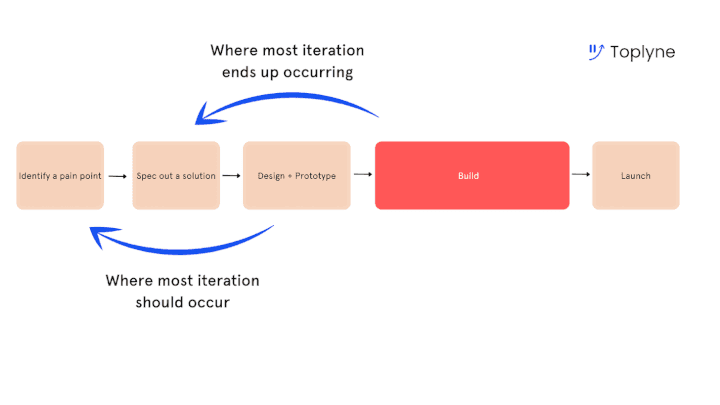
“If only there was a way to rapidly iterate on a product without ever building it?”
Enter Maze! 🔥
📊 “Beautiful & actionable analytics for InVision prototypes”
Pingg was a dedicated messaging service that would connect online gamers with their peers in an industry that was growing more social by the day. The idea was so well received that Pingg’s founder Jonathan Widawski would quickly build a list of 1500 early adopters who wanted to take the product for a spin.
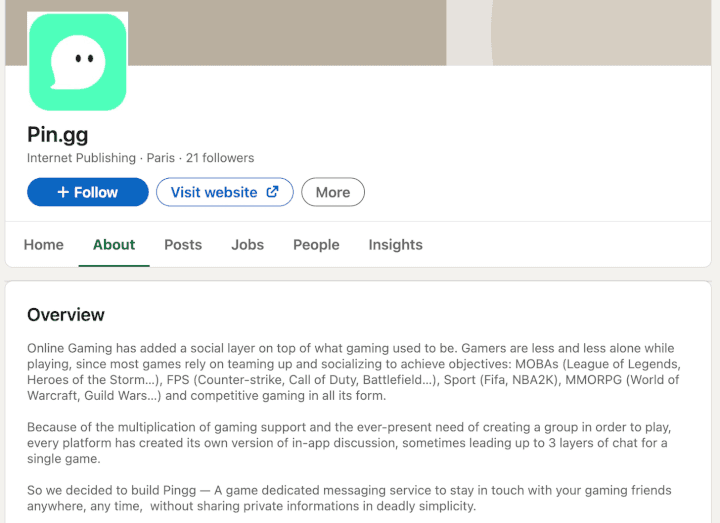
The product was however in its prototype stage and the UI/UX veteran in Jonathan (UX lead, BAM.Tech - a French design consultancy) decided to test its design and usability pre-development 💡. After a disappointing search for plug and play options, an internal solution was whipped up and was sent out over the email marketing tool mailchimp. In the open rates and test completion rates of this email campaign, our founders struck oil - the refined version of which we know today as Maze. 🌟
“We had an in-depth prototype of the product and 1,500 users in our waiting list eager to try it out. We looked at the market for solutions allowing us to easily send the prototype to our testers, but only found qualitative, video-based recording tools: we had neither the time nor the resources to spend 500 hours looking at footage to extract insights. That’s what got us started on our path to create Maze: a data-driven approach to design validation”. - Jonathan
Partnering with a long-time friend and lead developer/architect Thomas Mary, Jonathan set out to plug this market need for rapid and quantitative prototype testing. Maze’s V1 caught eyeballs when it was shared on Reddit and was soon after hunted on Producthunt. This version allowed users to:
Import their InVision prototypes onto the Maze testing platform
Create a ‘Mission’ - a task with an ideal expected path and numerous unexpected paths that a user can pick to complete/ not complete it.
Expose the platform to testers via links.
Capture user behavior as testers picked paths of their choice and completed/failed their Missions.
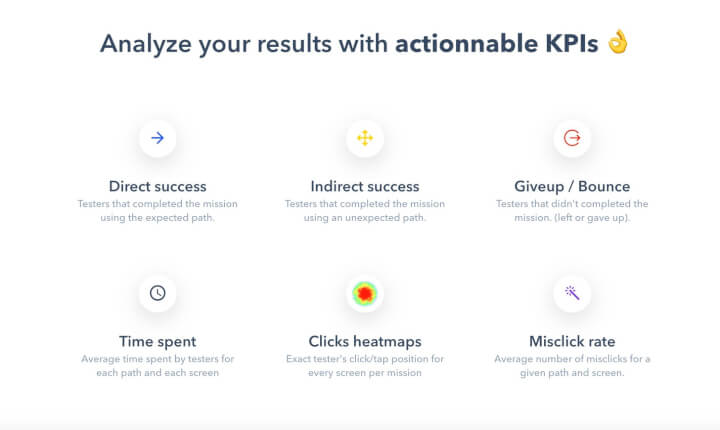
Today, Maze has grown into a full-suite, rapid testing platform used by 40,000+ brands like IBM, Logitech, Pipedrive, Uber, Greenpeace, and Braze, for their product development and marketing processes while boasting an NPS of 60. Their journey to democratize rapid user research is backed by a globally distributed workforce of 100+ employees and $20M+ of venture money raised from marquee investors like Emergence, Partech, and Amplify. 💰
This week, we dig deep into how Maze is cracking the Maze of Product-led growth.
🏗 Creating new value, rapidly
Staying true to practicing what they preach, Maze’s product development process includes extensive user research. The team works closely with their users to ensure that the “P in PLG” is a true reflection of their user’s ever-increasing needs and expectations.
🧩 Product-Market Fit: Maze’s head of product Arjen Harris employed Superhuman’s PMF survey to establish that Maze had indeed hit PMF, while at the same time notifying the team about gaps and wins. This is now an ongoing process at Maze for all new releases.
🚕 CAB: Maze collects qualitative insights via a Customer Advisory Board, a group of 80+ power users, and enterprise customers assembled by the customer success team (led by George Markos) who provide ongoing feedback for every new release. One-on-one calls with this elite group of users, although time-consuming have generated very valuable insights for the Maze team.
🥅 Fielding features requests: Maze uses Nolt for collecting features requests alongside a robust customer support experience that is always on the lookout for customer problems.
🌀 Maze for Maze: All maze prototypes and designs undergo discovery tests and useability tests on the platform (obviously 🤭).
Maze also employs research to inform its content strategy and marketing collateral.
And it is with this process that Maze has added multiple new product offerings expanding its scope from a prototype testing tool to a full suite research platform. 📈
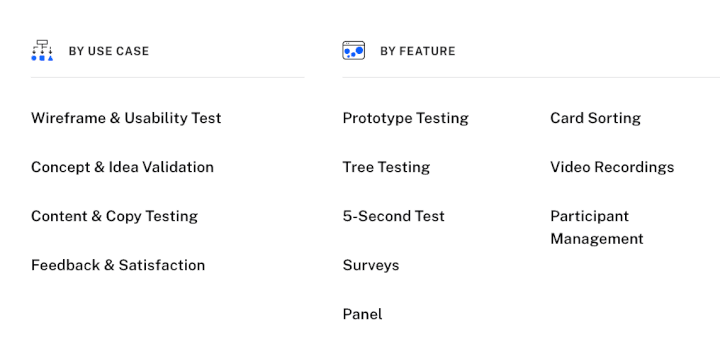
📣 Communicating value
This constant evolution can be a double edge sword for young startups finding their place in the ecosystem. Growing use cases, catering to multiple personas and the need for an all-encompassing brand positioning can create havoc. Maze handled this exceptionally using three major levers 🎚
🔎 The big positioning exercise - Maze underwent a positioning exercise under the guidance of Hema Padhu to adjust to the multi-use case product that it was growing into.
A core team comprising of Jonathan, Thomas, Arjen (Head of Product), and Bozena, (Director of Marketing) spoke to power users (via CAB), to analyze Maze’s differentiators and the market landscape to define their positioning statement.
At the end of the exercise, Maze broadened its horizons from user research to empowering anyone to test and learn rapidly.
💄 The big brand makeover - Maze re-employed designer Romain Briaux to do a complete overhaul of their brand assets. This exercise sought to reach an audience not limited to designers but also to the broader product function.
👑 Content remaining King - The content team led by Elena Luchita does an amazing job creating gold-standard resources for all things UI/UX research. The Maze blog is complemented by Subject guides, the Maze newsletter, UI/UX resource collections, the Optimal path podcast, and the 50-page mega resource -Democratizing Research to Deliver Impact at Scale. Together, the team’s efforts are establishing Maze as subject-matter expert’s for user testing, scoring very valuable soft power credits ⭐️
Maze also boasts research legend Behzod Sirjani (Founder of Yet Another Studio and ex- Slack/Facebook) as an advisor.
⚡Easy access to value
Frictionless access becomes the bridge between a well-designed product and well-earned top of the funnel - medals Maze claimed in the last two sections.
🤝 Integrations… with Figma, Adobe XD, InVision (remember when they were an InVision testing tool?), Marvel, and Sketch, positions Maze downstream of most of (rounded to all 😂) the designing and prototyping in the world. And a few clicks is all that it takes for a well-informed Product Manager/ Designer to test their creation on Maze.
📚 Templates: Drawing from Notion and Airtable’s playbooks, Maze offers ready-to-use templates cutting down the time to value for a user who is on the lookout for specific use cases.
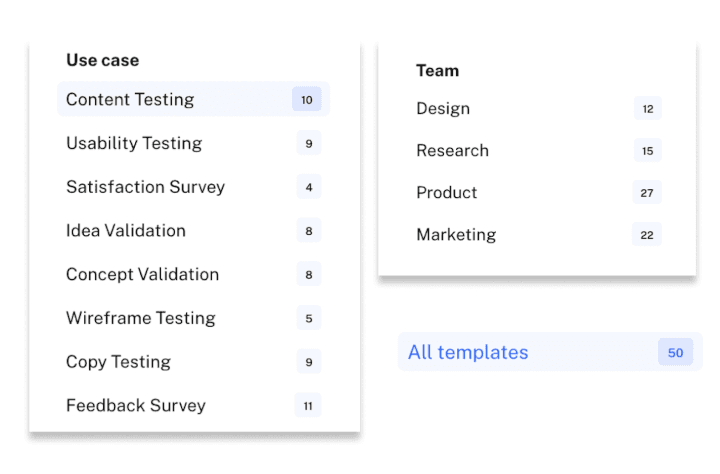
🆓 Freemium pricing: The free tier drives bottom-up growth converting inquisitive solo users to loyal champions of the product setting up a land-and-expand motion for the product.
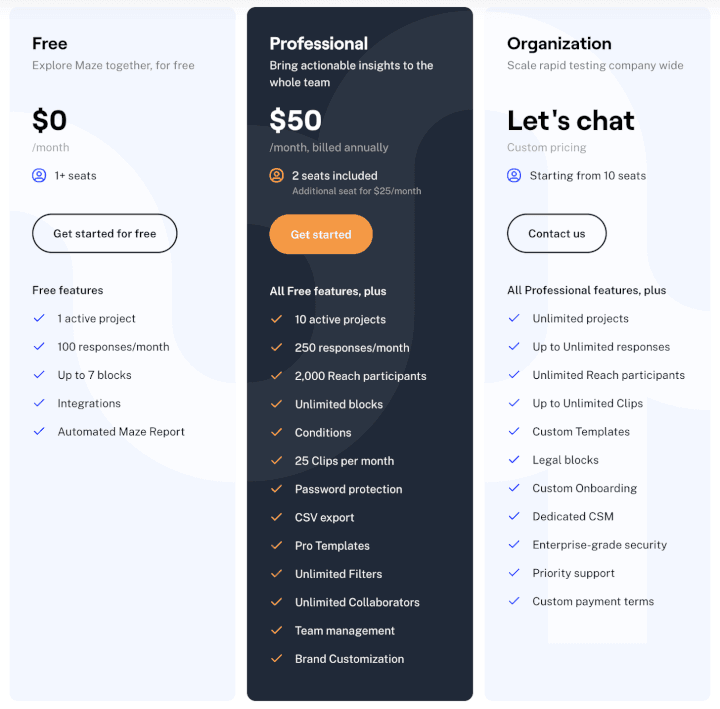
🏢 Enterprise: The enterprise offering comes packed with priority support, legal blocks, dedicated success resources, and handheld onboarding ensuring that the account is guided to value - as fast as possible.
Access to value at Maze is orchestrated by a Growth team, which executes hand in hand with the revenue function.
🐳 Growth Pods - Acquire, Activate & Monetize
The Growth function (mentored by Elena Verna, ex SVP @ Surveymonkey) at Maze is organized into three teams - Growth Marketing (Marketing), Acquisition and Activation (Product), and Monetization (Product).
“In my first 6 months at Maze with the Growth & Monetization team, we have managed to increase 3-month net-dollar retention by 80%, increased Maze project creation rates by 20%, uncovered levers that impacted ASP by 30-35% (in both directions!) and registered many more learnings that will help us deliver a much more valuable product for our users in the coming months.” - Luke Vella, Sr. Growth PM @ Maze
Growth marketing: led by the VP of Marketing Bozena Pieniazek and Growth Marketing lead Ewa Stachowiak drives brand awareness, marketing campaigns, lifecycle management, and lead generation.
The product pods: are cross-functional teams led by Sr. Growth PM Luke Vella with dedicated Engineering Blog and Design resources. The Growth teams follow an experimentative approach and drive in-product levers and metrics for acquisition, activation, and monetization.
While the Growth function drives product-led growth, a revenue team led by Will Paulus (VP - Sales) handles enterprise sales, sales-assist motion, sales development, and customer success.
⏩ ‘Reach’-ing out to the future
Maze continues to expand its product line up with the latest release being Maze Reach - a downstream addition for managing research participants within Maze (a CRM for research participants).
The product roadmap also includes easier onboarding and newer testing methods, indicating that Maze’s product development engine is still fast at work, converting user insights and requirements to features. Headcount graphs are also shooting up with YoY growth rates of 150%+ (source: LinkedIn). We’re super excited to see how Maze scales up to create a world where experiences are shaped by the people who engage with them ❤️
“Build it and they will come”
The proud epitaphs on the tombstone of a vast graveyard of failed startups who prioritized building a solution over testing the depth of a problem. A startup’s journey to success can be thought of as a series of iterations and failures till either product-market fit is achieved or the bank account runs dry.
In its simplest form, the process can be broken into a few simple steps, some faster and more resource-efficient than others.

A founding team's job is to rapidly iterate between these steps while (against all odds) staying alive, to come up with something that a consumer or business actually wants. So why do most startups or feature releases fail? A lack of prioritization. Where most iteration should occur in the problem identification, designing, and prototyping phase, most focus on iterating on the building phase.

“If only there was a way to rapidly iterate on a product without ever building it?”
Enter Maze! 🔥
📊 “Beautiful & actionable analytics for InVision prototypes”
Pingg was a dedicated messaging service that would connect online gamers with their peers in an industry that was growing more social by the day. The idea was so well received that Pingg’s founder Jonathan Widawski would quickly build a list of 1500 early adopters who wanted to take the product for a spin.

The product was however in its prototype stage and the UI/UX veteran in Jonathan (UX lead, BAM.Tech - a French design consultancy) decided to test its design and usability pre-development 💡. After a disappointing search for plug and play options, an internal solution was whipped up and was sent out over the email marketing tool mailchimp. In the open rates and test completion rates of this email campaign, our founders struck oil - the refined version of which we know today as Maze. 🌟
“We had an in-depth prototype of the product and 1,500 users in our waiting list eager to try it out. We looked at the market for solutions allowing us to easily send the prototype to our testers, but only found qualitative, video-based recording tools: we had neither the time nor the resources to spend 500 hours looking at footage to extract insights. That’s what got us started on our path to create Maze: a data-driven approach to design validation”. - Jonathan
Partnering with a long-time friend and lead developer/architect Thomas Mary, Jonathan set out to plug this market need for rapid and quantitative prototype testing. Maze’s V1 caught eyeballs when it was shared on Reddit and was soon after hunted on Producthunt. This version allowed users to:
Import their InVision prototypes onto the Maze testing platform
Create a ‘Mission’ - a task with an ideal expected path and numerous unexpected paths that a user can pick to complete/ not complete it.
Expose the platform to testers via links.
Capture user behavior as testers picked paths of their choice and completed/failed their Missions.

Today, Maze has grown into a full-suite, rapid testing platform used by 40,000+ brands like IBM, Logitech, Pipedrive, Uber, Greenpeace, and Braze, for their product development and marketing processes while boasting an NPS of 60. Their journey to democratize rapid user research is backed by a globally distributed workforce of 100+ employees and $20M+ of venture money raised from marquee investors like Emergence, Partech, and Amplify. 💰
This week, we dig deep into how Maze is cracking the Maze of Product-led growth.
🏗 Creating new value, rapidly
Staying true to practicing what they preach, Maze’s product development process includes extensive user research. The team works closely with their users to ensure that the “P in PLG” is a true reflection of their user’s ever-increasing needs and expectations.
🧩 Product-Market Fit: Maze’s head of product Arjen Harris employed Superhuman’s PMF survey to establish that Maze had indeed hit PMF, while at the same time notifying the team about gaps and wins. This is now an ongoing process at Maze for all new releases.
🚕 CAB: Maze collects qualitative insights via a Customer Advisory Board, a group of 80+ power users, and enterprise customers assembled by the customer success team (led by George Markos) who provide ongoing feedback for every new release. One-on-one calls with this elite group of users, although time-consuming have generated very valuable insights for the Maze team.
🥅 Fielding features requests: Maze uses Nolt for collecting features requests alongside a robust customer support experience that is always on the lookout for customer problems.
🌀 Maze for Maze: All maze prototypes and designs undergo discovery tests and useability tests on the platform (obviously 🤭).
Maze also employs research to inform its content strategy and marketing collateral.
And it is with this process that Maze has added multiple new product offerings expanding its scope from a prototype testing tool to a full suite research platform. 📈

📣 Communicating value
This constant evolution can be a double edge sword for young startups finding their place in the ecosystem. Growing use cases, catering to multiple personas and the need for an all-encompassing brand positioning can create havoc. Maze handled this exceptionally using three major levers 🎚
🔎 The big positioning exercise - Maze underwent a positioning exercise under the guidance of Hema Padhu to adjust to the multi-use case product that it was growing into.
A core team comprising of Jonathan, Thomas, Arjen (Head of Product), and Bozena, (Director of Marketing) spoke to power users (via CAB), to analyze Maze’s differentiators and the market landscape to define their positioning statement.
At the end of the exercise, Maze broadened its horizons from user research to empowering anyone to test and learn rapidly.
💄 The big brand makeover - Maze re-employed designer Romain Briaux to do a complete overhaul of their brand assets. This exercise sought to reach an audience not limited to designers but also to the broader product function.
👑 Content remaining King - The content team led by Elena Luchita does an amazing job creating gold-standard resources for all things UI/UX research. The Maze blog is complemented by Subject guides, the Maze newsletter, UI/UX resource collections, the Optimal path podcast, and the 50-page mega resource -Democratizing Research to Deliver Impact at Scale. Together, the team’s efforts are establishing Maze as subject-matter expert’s for user testing, scoring very valuable soft power credits ⭐️
Maze also boasts research legend Behzod Sirjani (Founder of Yet Another Studio and ex- Slack/Facebook) as an advisor.
⚡Easy access to value
Frictionless access becomes the bridge between a well-designed product and well-earned top of the funnel - medals Maze claimed in the last two sections.
🤝 Integrations… with Figma, Adobe XD, InVision (remember when they were an InVision testing tool?), Marvel, and Sketch, positions Maze downstream of most of (rounded to all 😂) the designing and prototyping in the world. And a few clicks is all that it takes for a well-informed Product Manager/ Designer to test their creation on Maze.
📚 Templates: Drawing from Notion and Airtable’s playbooks, Maze offers ready-to-use templates cutting down the time to value for a user who is on the lookout for specific use cases.

🆓 Freemium pricing: The free tier drives bottom-up growth converting inquisitive solo users to loyal champions of the product setting up a land-and-expand motion for the product.

🏢 Enterprise: The enterprise offering comes packed with priority support, legal blocks, dedicated success resources, and handheld onboarding ensuring that the account is guided to value - as fast as possible.
Access to value at Maze is orchestrated by a Growth team, which executes hand in hand with the revenue function.
🐳 Growth Pods - Acquire, Activate & Monetize
The Growth function (mentored by Elena Verna, ex SVP @ Surveymonkey) at Maze is organized into three teams - Growth Marketing (Marketing), Acquisition and Activation (Product), and Monetization (Product).
“In my first 6 months at Maze with the Growth & Monetization team, we have managed to increase 3-month net-dollar retention by 80%, increased Maze project creation rates by 20%, uncovered levers that impacted ASP by 30-35% (in both directions!) and registered many more learnings that will help us deliver a much more valuable product for our users in the coming months.” - Luke Vella, Sr. Growth PM @ Maze
Growth marketing: led by the VP of Marketing Bozena Pieniazek and Growth Marketing lead Ewa Stachowiak drives brand awareness, marketing campaigns, lifecycle management, and lead generation.
The product pods: are cross-functional teams led by Sr. Growth PM Luke Vella with dedicated Engineering Blog and Design resources. The Growth teams follow an experimentative approach and drive in-product levers and metrics for acquisition, activation, and monetization.
While the Growth function drives product-led growth, a revenue team led by Will Paulus (VP - Sales) handles enterprise sales, sales-assist motion, sales development, and customer success.
⏩ ‘Reach’-ing out to the future
Maze continues to expand its product line up with the latest release being Maze Reach - a downstream addition for managing research participants within Maze (a CRM for research participants).
The product roadmap also includes easier onboarding and newer testing methods, indicating that Maze’s product development engine is still fast at work, converting user insights and requirements to features. Headcount graphs are also shooting up with YoY growth rates of 150%+ (source: LinkedIn). We’re super excited to see how Maze scales up to create a world where experiences are shaped by the people who engage with them ❤️
Related Articles




Behavioral Retargeting: A Game-Changer in the Cookieless Era
Unlock the power of behavioral retargeting for the cookieless future! Learn how it personalizes ads & boosts conversions. #behavioralretargeting




All of Toplyne's 40+ Badges in the G2 Spring Reports
Our customers awarded us 40+ badges in G2's Summer Report 2024.




Unlocking the Full Potential of Google PMax Campaigns: Mastering Audience Selection to Double Your ROAS
Copyright © Toplyne Labs PTE Ltd. 2024
Copyright © Toplyne Labs PTE Ltd. 2024
Copyright © Toplyne Labs PTE Ltd. 2024
Copyright © Toplyne Labs PTE Ltd. 2024